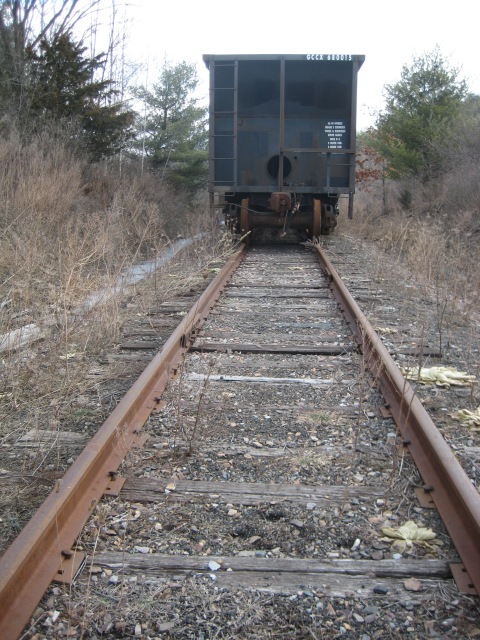 No, the train isn’t barrelling down the track here. The weeds growing up through the railroad tracks and under the wheels show how many months or even years it’s been since this train went anywhere.
No, the train isn’t barrelling down the track here. The weeds growing up through the railroad tracks and under the wheels show how many months or even years it’s been since this train went anywhere.
Railroad tracks are interesting little habitats. They cut, straight as an arrow, through cities, meadows, forests, mountains. Back in the days when people first built railroads all across the country, the rail embankments were the first road for plants to travel. Dozens, even hundreds of species of plants moved along the tracks–not puffing along at sixty miles an hour like the engine, but slowly, one seed at a time. Plants that could never have survived in virgin forests or untouched prairies were able to take root along the railroad track and spread across the country.
You wouldn’t think a railway embankment would be an alluring habitat for plants. 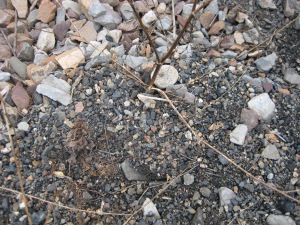 No shade, hot in summer, freezing in winter, nothing but gravel for plants to grow in. Sounds like a desert. And, sure enough, it’s the desert plants that move in.
No shade, hot in summer, freezing in winter, nothing but gravel for plants to grow in. Sounds like a desert. And, sure enough, it’s the desert plants that move in.
Not saguaro cactus and prickly pear-type desert plants. I mean the small, tough, drought-resistant plants that evolved in dry, rocky habitats in Africa and Eurasia. They find railroad beds quite congenial spots.
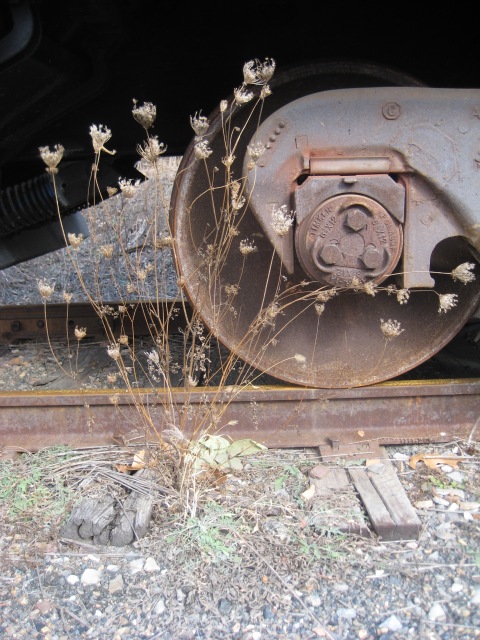 Daucus carota loves it here. You know this one, right? Queen Anne’s Lace.
Daucus carota loves it here. You know this one, right? Queen Anne’s Lace.
When you see this familiar plant, the word carrot probably doesn’t leap to mind. Queen Anne’s Lace is the summer name, when the flowers are all white and dainty and lacy as June brides. Like most wildflowers, these have a host of common names, and Bird’s Nest Weed is the one that works best in winter, when the dried-out umbels curve to form little birds-nest clumps.
But it is a carrot, nonetheless. Daucus carota subsp. sativus is a subspecies of this plant, adapted by humans over the years to be that tasty orange root we all know and love.
Could you eat these wild versions of carrots? You could, but no one does. Wild carrots have a skinny, tough root, which is not very interesting as food unless you enjoy chewing on leather bootlaces. Also, Queen Anne’s Lace looks remarkably similar to a plant called Poison Hemlock, so be really really sure you know what you’re eating.
Queen Anne’s Lace is another of those plants that’s a hero (heroine?) or a villain, depending on whose book or website you’re reading. It’s a non-native species, quite invasive in fields and meadows, and classified as a noxious weed by the USDA.
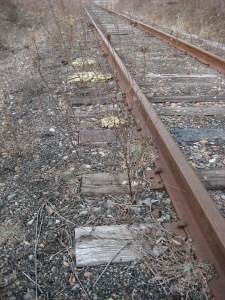 On the other hand, it’s been here a long time now–centuries. Whatever native plants it once displaced, it’s impossible to eradicate it now. With the tenacity and determination of a bulldog, this plant has wormed its way into the ecology of native species, and become a major host plant for caterpillars of Eastern Black Swallowtail butterflies. It’s an important source of nectar for many insects, especially butterflies and moths. And it’s beautiful–a big gorgeous snowflake in summer, but even in February it has a certain stark beauty.
On the other hand, it’s been here a long time now–centuries. Whatever native plants it once displaced, it’s impossible to eradicate it now. With the tenacity and determination of a bulldog, this plant has wormed its way into the ecology of native species, and become a major host plant for caterpillars of Eastern Black Swallowtail butterflies. It’s an important source of nectar for many insects, especially butterflies and moths. And it’s beautiful–a big gorgeous snowflake in summer, but even in February it has a certain stark beauty.
Be that as it may, noxious or beneficent, Queen Anne and her lace are here to stay. Look for her hitching a ride along the railroad tracks.

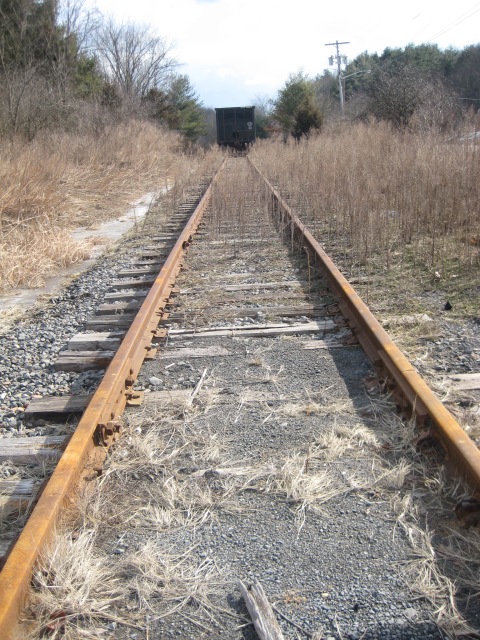




This is such a lovely post. I think Queen Anne’s Lace is beautiful, and was given some great ornaments designed like them for my wedding. I had no idea they were a type of carrot.
Yes, it’s funny, isn’t it? Such a lovely flower, and such a humble vegetable, and they’re one and the same.
never gave track habitat a thought – thanks for pointing it and it’s spreading power out,. love Wild Carrot! Great blog, as always!